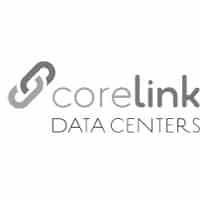In a cloud era, we are seeing more and more people and businesses opt for edge computing. Edge computing is a buzzword in the tech industry but people sometimes struggle to succinctly explain what the edge is. For so long, all of the computing was done right at the source but then the era of the cloud ushered in and we began sourcing some of our computing power from distributed locations not directly at the source. In some way, edge computing is a hybrid of these two things.
Edge Computing Defined
 To take a look at how edge computing will impact the enterprise network, we must first have a clear definition of edge computing from which to work. ITPro Today offers a clear and easy-to-understand explanation of edge computing, “Edge computing attempts to reduce latency in processing by providing compute closer to the source of data collection: on the edges of the cloud. This compute may take place on an IoT device itself, as is the case with devices being developed by Nvidia for autonomous cars, or it may be used by a company to provide a particular service–such as Apple keeping authentication on-device. In the case of Nvidia and other companies developing technology for self-driving cars, overcoming latency is a matter of life and death–literally. For Apple, reducing latency not only allows for a better end user experience–faster unlocking–but it also addresses concerns about data privacy violations. By shortening the runway that network traffic needs to provide some form of calculated result, edge computing addresses latency, security, data privacy, and health and safety concerns.”
To take a look at how edge computing will impact the enterprise network, we must first have a clear definition of edge computing from which to work. ITPro Today offers a clear and easy-to-understand explanation of edge computing, “Edge computing attempts to reduce latency in processing by providing compute closer to the source of data collection: on the edges of the cloud. This compute may take place on an IoT device itself, as is the case with devices being developed by Nvidia for autonomous cars, or it may be used by a company to provide a particular service–such as Apple keeping authentication on-device. In the case of Nvidia and other companies developing technology for self-driving cars, overcoming latency is a matter of life and death–literally. For Apple, reducing latency not only allows for a better end user experience–faster unlocking–but it also addresses concerns about data privacy violations. By shortening the runway that network traffic needs to provide some form of calculated result, edge computing addresses latency, security, data privacy, and health and safety concerns.”
Why Edge Computing?
If the cloud is working relatively well for enterprises, the question then becomes, why bother with edge computing? The short and sweet answer, data. The amount of data we are using now for just about everything is already huge and it is growing at an exponential rate. When you combine the amount of data that needs to be transmitted on a second-by-second basis with the need for data security, you have quite a conundrum for many enterprises large and small.
Enterprises that deal with data delivery quality and speeds for customers are likely the first adopters of edge computing. By spreading server locations out and placing them nearest to the customers they are serving, data is able to be delivered more quickly which improves functionality on multiple levels for customers. When latency is often the name of the game in customer satisfaction, edge computing holds huge, game-changing potential.
How Can Enterprises Integrate Edge Computing?
Obviously, implementing edge computing – much like any other new endeavor – is easier when it is on a smaller scale which is why it has slowly but surely been making its way to the enterprise level. To be able to achieve edge computing, an enterprise must strategically place servers in a variety of locations including on-premises, in the cloud, or in colocation facilities.
Data Center Infrastructure Will Change with Edge Computing
Truly effective and sustainable edge computing on the enterprise level will involve a strategically distributed and carefully designed, yet agile, infrastructure. What we will likely begin to see happening is a move from businesses having one or a few massive data centers to a carefully designed infrastructure of multiple smaller, or micro, data centers.
Centralized Data Centers vs. Decentralized Data Centers
While keeping everything in one place and only having to manage one data center may seem like a more efficient solution, it poses a number of challenges. Cooling, UPS, security, etc. for a massive data center is much harder to control and often more costly than distributing resources into micro data centers. Distributing resources among micro data centers, as well as a distributed cloud and/or colocation locations allows for more precise and specific security and environmental controls which are two of the largest concerns in data centers right now.
How Edge Computing Will Change Data Centers
Because edge computing distributes data closer to the user to be processed, rather than go through a centralized data center, the emergence of edge computing on the enterprise level will impact data centers worldwide.
 While the cloud and traditional data centers have been able to grow and evolve to meet modern demands, the reality is, the future of the data is BIG. With the Internet of Things (IoT), AI, and the introduction of 5G, basic everyday activities like driving, cooking, going to the doctor, research, gaming, television streaming, and more use big amounts of data. The IoT is certainly not going anywhere and will only continue to expand, as will the size and volume of data being transmitted. The reality is, latency is negligible when the data being sent to a data center or the cloud is relatively small but that is not typically the case on an enterprise level. When big data needs to be transmitted, the latency is often no longer negligible – and that frustrates the end-user. Most businesses do not want frustrated end-users because it could drive down customer retention and may lead to loss of sales, amongst many other non-monetary concerns.
While the cloud and traditional data centers have been able to grow and evolve to meet modern demands, the reality is, the future of the data is BIG. With the Internet of Things (IoT), AI, and the introduction of 5G, basic everyday activities like driving, cooking, going to the doctor, research, gaming, television streaming, and more use big amounts of data. The IoT is certainly not going anywhere and will only continue to expand, as will the size and volume of data being transmitted. The reality is, latency is negligible when the data being sent to a data center or the cloud is relatively small but that is not typically the case on an enterprise level. When big data needs to be transmitted, the latency is often no longer negligible – and that frustrates the end-user. Most businesses do not want frustrated end-users because it could drive down customer retention and may lead to loss of sales, amongst many other non-monetary concerns.
Edge Computing Provides Enterprises with a Sustainable & Scalable Data Center Option
Edge computing offers a more sustainable way for enterprises to scale their computing needs as needed. By distributing micro data centers closer to the end-user, latency is again reduced so that big data can be transferred as needed and at a fast pace. Because micro data centers are smaller they are easier and faster to deploy, easier to maintain, and easier to troubleshoot in the event of a security breach or downtime.
Enterprises May Make the Shift Towards Micro Data Centers
Further, micro data centers are a much more energy-efficient option when compared with traditional or legacy data centers. In a study published by Schneider Electric, research found that micro data centers have the advantage when it comes to scalability and the potential to offer significant cost savings for enterprises, “The capital expense for building a single centralized data center rated for 1MW of IT load is $6.98 million or $6.98/watt. The capital expense of 200 5kW micro data centers is $4.05 million or $4.05/watt. Micro data centers represent a 42% savings over a centralized data center….Micro data centers are inherently scalable because one can deploy them in their entirety only when needed. In the case of this analysis I can deploy them 5 kW at a time. This “pay as you grow” approach conserves cash flow and is especially useful in branch office type of deployments…Similar to a distributed IT architecture, if more capacity is needed in the future, another micro data center is added. Standardizing these micro data centers results in further benefits including reduced deployment time, simplified management, and lower maintenance and capital costs.”
Edge computing is not new but it has also not been around long enough to fully know what it will look like when the majority of data centers implement edge computing. While any new endeavor can be daunting when it comes to changing data center strategy and infrastructure, it is best to begin now rather than wait and be behind competitors. Data centers and enterprises can anticipate this shift now and begin to adopt standardized data processing methods. Though not all large data centers will go away, we will see a rise in micro data centers and the adoption of edge computing in existing data centers. Edge computing will impact just about every single industry so data centers should prepare to introduce edge computing as part of their services.




























